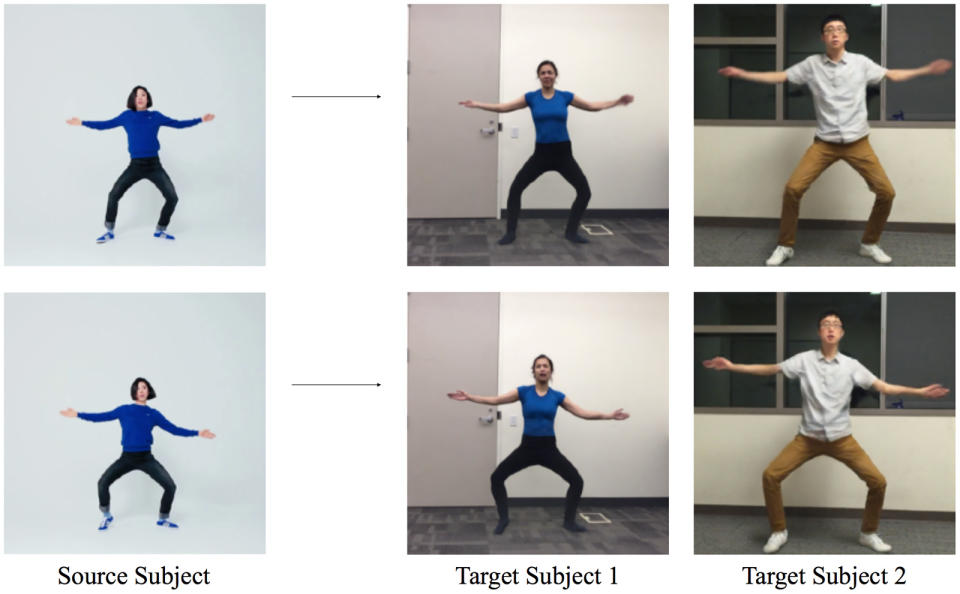AI-altered video makes it look like you can dance
Show off without years of dance classes.
Can't pop-lock or Lindy Hop to save your life? Don't worry -- AI could soon make it look like you're a dance superstar. UC Berkeley researchers have developed a deep learning system that translates dance moves from a source video to less-than-experienced subjects. One algorithm creates a virtual skeleton to map poses, while two more algorithms square off against each other to both create the full picture and create a more realistic face for subjects as their virtual bodies twirl around. You do need the test subject to move around for a short while to get reference material, but the result is realistic enough to give an amateur the deftness of a ballet dancer.
There's still work to be done before it's truly ready. You'll notice the occasional jittering, blurry details and even missing body pieces. The scientists sometimes needed subjects to move in specific ways to help the AI create the indented effect. Moreover, the dances you see here are relatively easy to translate given the standing position and obvious movements. It might be harder to replicate breakdancing or other routines where you might not even be right-side up, let alone standing.
The potential uses are quite clear, though, and there are some potential ethical concerns. It'd certainly be useful for parodies, or pure fun. You could make your straight-laced coworker do the electro shuffle, or show your kids what they'd look like doing a Fortnite dance. However, we've also seen what happened with deepfakes. What was once a clever face-swapping technology quickly fell prone to abuse for porn. It's all too easy to see this used to doctor videos for personal attacks or propaganda -- say, making a politician deliver a rude gesture. Just as it's no longer certain that a talking head in a video is authentic, you might not have guarantees that a person's body movements are real.


